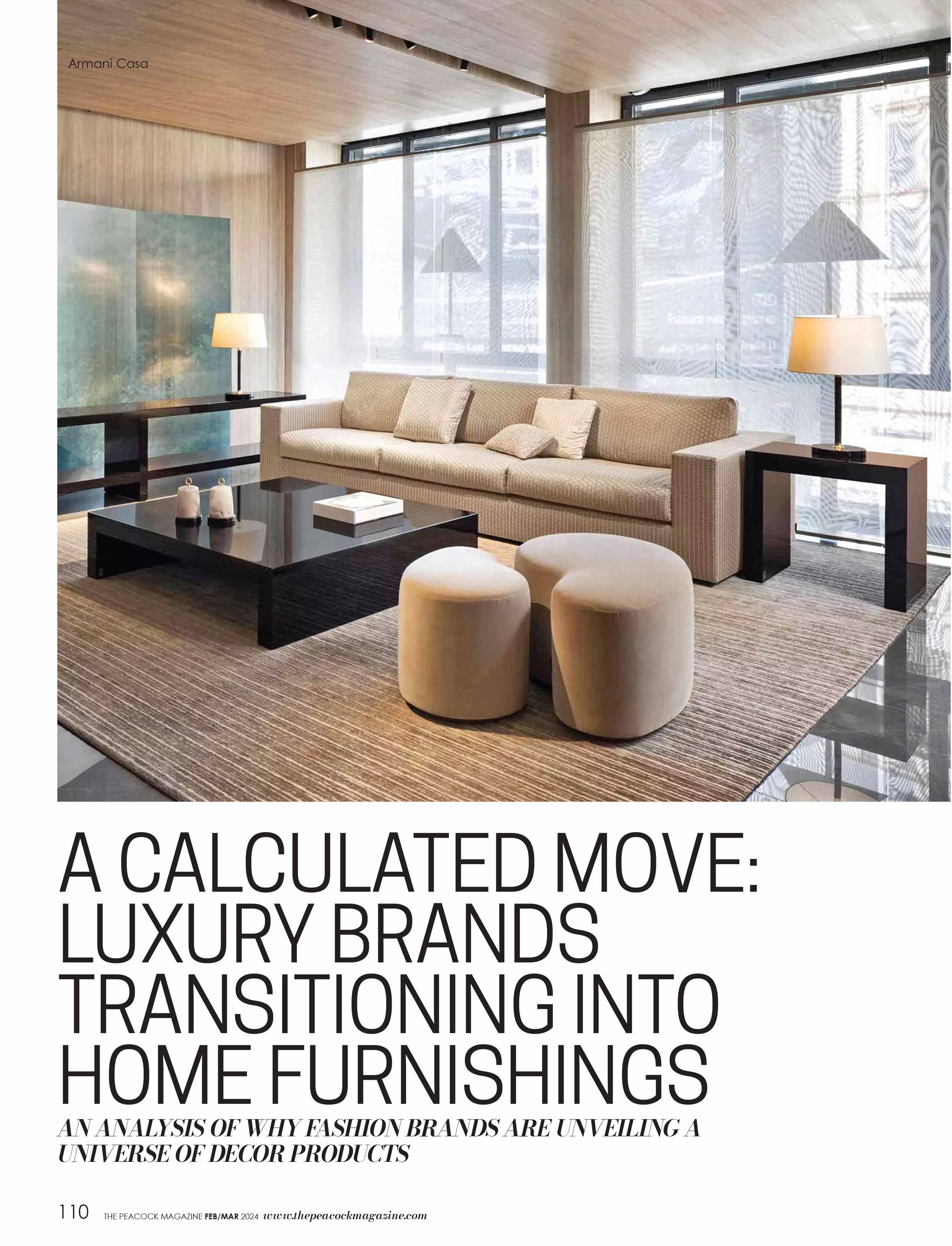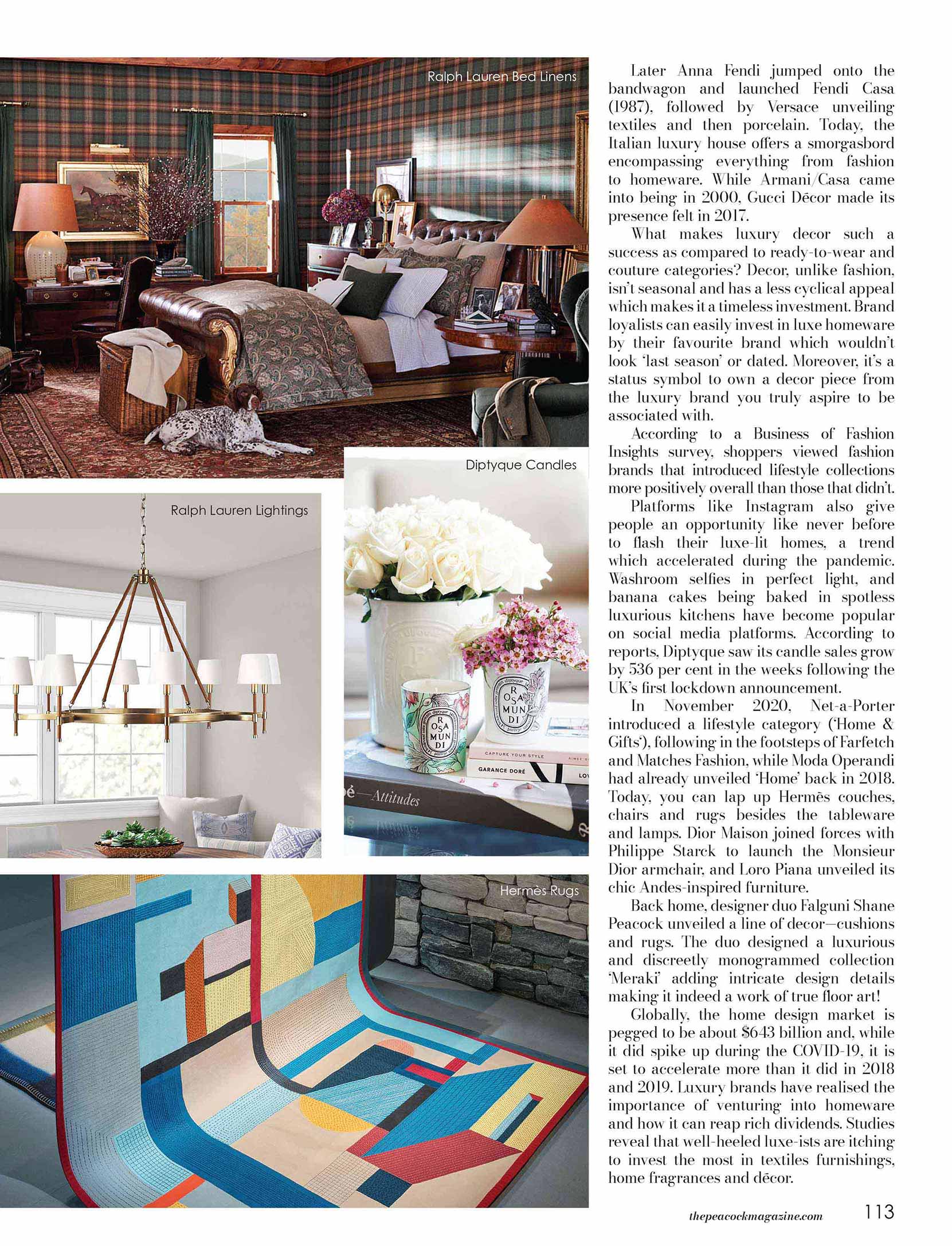
An analysis of why fashion brands are unveiling a universe of decor products.
By Manish Mishra
Who wouldn’t want to enjoy their coffee in a Gucci cup, lounge in a Fendi sofa or take a selfie against the Armani wallpaper in their living room? Over the years, global luxury brands have smartly and successfully ventured into the interiors and decor space—unveiling furniture, glassware, wallpaper, candles, linens, etc.
Ralph Lauren easily saw success in homeware much before anyone else did. By 1983, the American luxury brand unveiled Ralph Lauren Home, which met with phenomenal success and continues to do well even today. The ready-to-wear designer pioneered furniture and lighting, floor coverings, fabric and wallcoverings, fine china, crystal, and silverwares, and decorative accessories, besides bed and bath linens.



Later Anna Fendi jumped onto the bandwagon and launched Fendi Casa (1987), followed by Versace unveiling textiles and then porcelain. Today, the Italian luxury house offers a smorgasbord encompassing everything from fashion to homeware. While Armani/Casa came into being in 2000, Gucci Décor made its presence felt in 2017.
What makes luxury decor such a success as compared to ready-to-wear and couture categories? Decor, unlike fashion, isn’t seasonal and has a less cyclical appeal which makes it a timeless investment. Brand loyalists can easily invest in luxe homeware by their favourite brand which wouldn’t look ‘last season’ or dated. Moreover, it’s a status symbol to own a decor piece from the luxury brand you truly aspire to be associated with.
According to a Business of Fashion Insights survey, shoppers viewed fashion brands that introduced lifestyle collections more positively overall than those that didn’t.
Platforms like Instagram also give people an opportunity like never before to flash their luxe-lit homes, a trend which accelerated during the pandemic. Washroom selfies in perfect light, and banana cakes being baked in spotless luxurious kitchens have become popular on social media platforms. According to reports, Diptyque saw its candle sales grow by 536 per cent in the weeks following the UK’s first lockdown announcement.
In November 2020, Net-a-Porter introduced a lifestyle category (‘Home & Gifts‘), following in the footsteps of Farfetch and Matches Fashion, while Moda Operandi had already unveiled ‘Home’ back in 2018. Today, you can lap up Hermès couches, chairs and rugs besides the tableware and lamps. Dior Maison joined forces with Philippe Starck to launch the Monsieur Dior armchair, and Loro Piana unveiled its chic Andes-inspired furniture.
Back home, designer duo Falguni Shane Peacock unveiled a line of decor—cushions and rugs. The duo designed a luxurious and discreetly monogrammed collection ‘Meraki’ adding intricate design details making it indeed a work of true floor art!
Globally, the home design market is pegged to be about $643 billion and, while it did spike up during the COVID-19, it is set to accelerate more than it did in 2018 and 2019. Luxury brands have realised the importance of venturing into homeware and how it can reap rich dividends. Studies reveal that well-heeled luxe-ists are itching to invest the most in textiles furnishings, home fragrances and décor.
